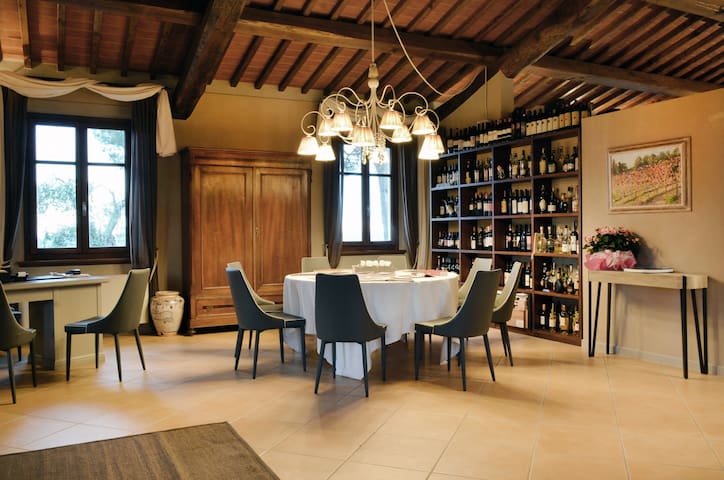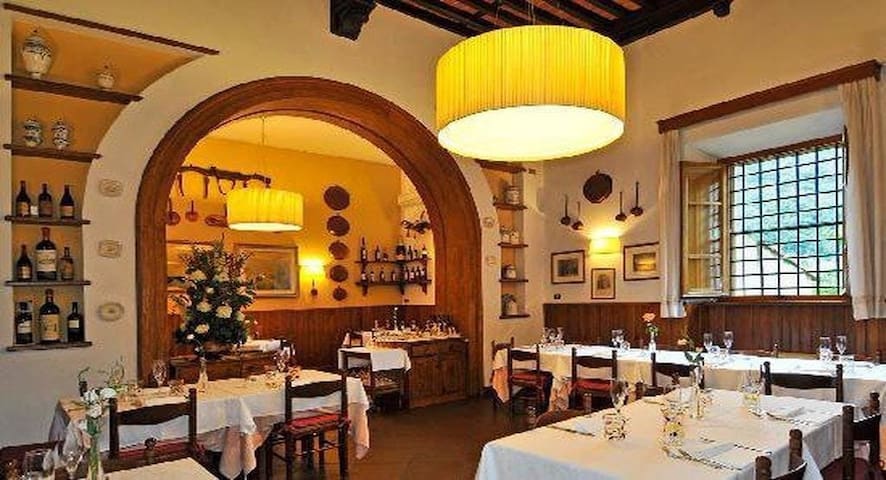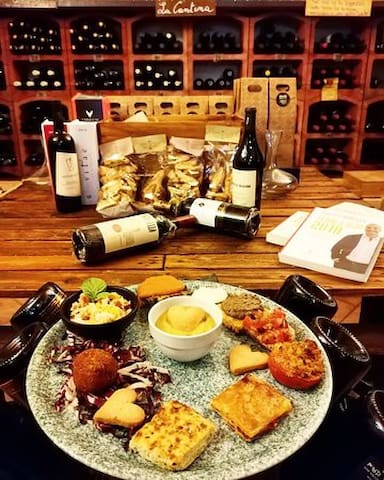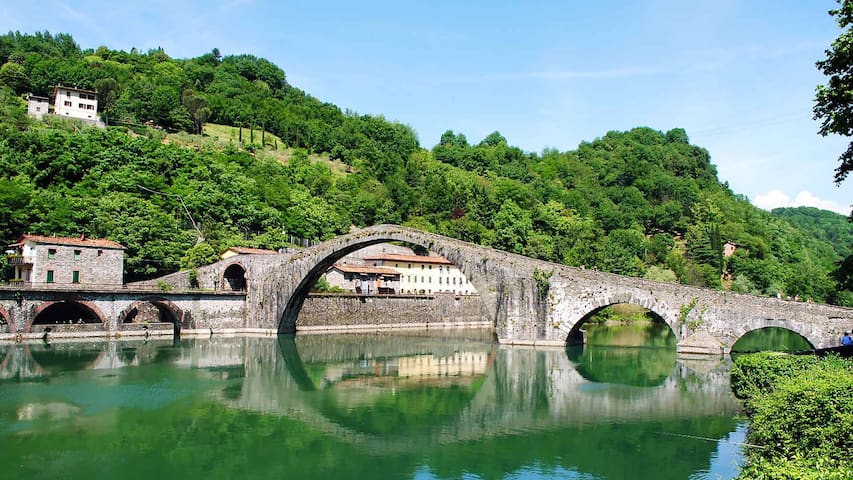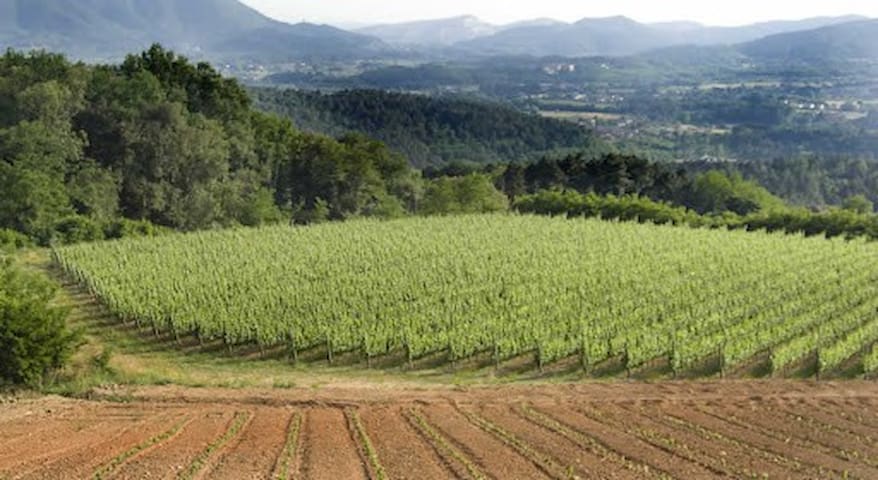Offerta gastronomica
In a region that has always been renowned for good cuisine, in one of the most evocative views of the province of Lucca, this restaurant is the right place for lovers of savory Tuscan flavors to which are added fish proposals (the sea, the great passion of the chef -patron!). The attentive and cordial service, as well as the recent renovations make the place an address to be marked - absolutely - on the agenda!
20 locals recommend
Ristorante Forassiepi
1 Via della ConteaIn a region that has always been renowned for good cuisine, in one of the most evocative views of the province of Lucca, this restaurant is the right place for lovers of savory Tuscan flavors to which are added fish proposals (the sea, the great passion of the chef -patron!). The attentive and cordial service, as well as the recent renovations make the place an address to be marked - absolutely - on the agenda!
Tuscan restaurant inside the Buonamico Wine Resort at Tenuta Buonamico in Montecarlo di Lucca immersed in the vineyards of the historic cellar where you can spend moments of pure relaxation savoring the tasty dishes of the Chef. Tuscan products in a contemporary way. Open for both lunch and dinner!
7 locals recommend
Ristorante Syrah
43 Via di MontecarloTuscan restaurant inside the Buonamico Wine Resort at Tenuta Buonamico in Montecarlo di Lucca immersed in the vineyards of the historic cellar where you can spend moments of pure relaxation savoring the tasty dishes of the Chef. Tuscan products in a contemporary way. Open for both lunch and dinner!
Soups and Florentine in a rustic-chic place from 1368 with copper pots on the walls and boiserie.
Very characteristic, really delicious dishes.
25 locals recommend
Antica Locanda di Sesto
1660 Via LudovicaSoups and Florentine in a rustic-chic place from 1368 with copper pots on the walls and boiserie.
Very characteristic, really delicious dishes.
Historic restaurant in the Lucca countryside of the same family for five generations. Pizzeria restaurant that offers the typical recipes that grandmother used to make and pizza from the wood oven. The business was born before the 1900s. Where it was present at the time. Food shop, bar service, restaurant service and butchery with production of its own sausages. Today it is a restaurant and pizzeria with typical artisan cuisine. Wine cellar with attention to the productions of the territory.
15 locals recommend
Ristorante Pizzeria A Bimbotto
175 Via di VornoHistoric restaurant in the Lucca countryside of the same family for five generations. Pizzeria restaurant that offers the typical recipes that grandmother used to make and pizza from the wood oven. The business was born before the 1900s. Where it was present at the time. Food shop, bar service, restaurant service and butchery with production of its own sausages. Today it is a restaurant and pizzeria with typical artisan cuisine. Wine cellar with attention to the productions of the territory.
Visite turistiche
A medieval fortress, which has become one with the Montecarlo Fortress, now a very prestigious historical residence, has been welcoming visitors and tourists from all over the world for years who appreciate the beauty of art, the harmony of the ancient line, the tranquility of village isolated, the culture and history of a timeless place
Fortezza di Montecarlo
4 Via FortezzaA medieval fortress, which has become one with the Montecarlo Fortress, now a very prestigious historical residence, has been welcoming visitors and tourists from all over the world for years who appreciate the beauty of art, the harmony of the ancient line, the tranquility of village isolated, the culture and history of a timeless place
The Ponte della Maddalena crosses the Serchio river near Borgo a Mozzano, in the province of Lucca. As a result of its shape, its highest, broadest and most particular arch, almost inhuman, this engineering pearl is the subject of many tales
89 locals recommend
Ponte della Maddalena (detto Ponte del Diavolo)
The Ponte della Maddalena crosses the Serchio river near Borgo a Mozzano, in the province of Lucca. As a result of its shape, its highest, broadest and most particular arch, almost inhuman, this engineering pearl is the subject of many tales
Villa Reale di Marlia boasts one of the most beautiful parks in Italy and includes numerous and refined gardens, true botanical rarities and imposing palaces built over the centuries. Its park is crossed by the avenues of the Camellias and hosts two famous theaters, that of Water and that of Verzura (where the famous violinist N. Paganini often performed for Elisa Baciocchi); to embellish it are added the Lemon Garden and the Spanish Garden and several period residences that enrich the visit to the Park. An itinerary designed ad hoc will accompany you to the discovery of refined works of art and glimpses of great effect, designing a ring route around the Royal Villa, the monuments and the gardens.
36 locals recommend
Villa Reale in Marlia
2 Via Fraga AltaVilla Reale di Marlia boasts one of the most beautiful parks in Italy and includes numerous and refined gardens, true botanical rarities and imposing palaces built over the centuries. Its park is crossed by the avenues of the Camellias and hosts two famous theaters, that of Water and that of Verzura (where the famous violinist N. Paganini often performed for Elisa Baciocchi); to embellish it are added the Lemon Garden and the Spanish Garden and several period residences that enrich the visit to the Park. An itinerary designed ad hoc will accompany you to the discovery of refined works of art and glimpses of great effect, designing a ring route around the Royal Villa, the monuments and the gardens.
The Villa is fully furnished with period furniture and paintings and is surrounded by a 9 hectare botanical park. The name derives from the last family that bought the property, Carolina von Grabau. The base of the building seen today was built in the 16th century over the ruins of another mansion dating from the early 15th century.
The park is divided into several architectural gardens and hosts centenary trees as well as some arboreal rarities. While exploring the park, you will come across the "Limonaia", an impressive and majestic 17th century lemon greenhouse and the "Teatro di Verzura", located in a garden bordered by thick hedges that create an intimate and romantic atmosphere.
14 locals recommend
Villa Grabau
269 Via per MatraiaThe Villa is fully furnished with period furniture and paintings and is surrounded by a 9 hectare botanical park. The name derives from the last family that bought the property, Carolina von Grabau. The base of the building seen today was built in the 16th century over the ruins of another mansion dating from the early 15th century.
The park is divided into several architectural gardens and hosts centenary trees as well as some arboreal rarities. While exploring the park, you will come across the "Limonaia", an impressive and majestic 17th century lemon greenhouse and the "Teatro di Verzura", located in a garden bordered by thick hedges that create an intimate and romantic atmosphere.
What many are unaware of is that the villa is once again open to the public. Recently renovated, the villa is characterized by wonderful decorations, as are the large bright spaces and the rooms from which you can enjoy a view of the well-deserved gardens, which alone are enough to justify the ticket to be paid to enter: green spaces large, secret ponds, fountains and statues - in addition to the villa of course - are all subjects for making magnificent photos.
There are many legends about the character of Lucida Mansi, the beautiful wife of Gasparre Mansi and ancestor of the homonymous villa: she most likely died of the plague in 1649, but many claim that she made a pact with the devil by giving him her young soul in exchange for another 30 years of beauty and youth.
8 locals recommend
Villa Mansi, Segromigno in Monte
259 Via delle SelvetteWhat many are unaware of is that the villa is once again open to the public. Recently renovated, the villa is characterized by wonderful decorations, as are the large bright spaces and the rooms from which you can enjoy a view of the well-deserved gardens, which alone are enough to justify the ticket to be paid to enter: green spaces large, secret ponds, fountains and statues - in addition to the villa of course - are all subjects for making magnificent photos.
There are many legends about the character of Lucida Mansi, the beautiful wife of Gasparre Mansi and ancestor of the homonymous villa: she most likely died of the plague in 1649, but many claim that she made a pact with the devil by giving him her young soul in exchange for another 30 years of beauty and youth.
The entrance fee may seem a bit expensive, but the tour of the villa and the guide, who will reveal various information and curiosities about it, are both worthwhile. The garden, in a purely English style with green courtyards and huge trees, is very beautiful and well kept but it is the villa, fully decorated and furnished with period furniture, that will literally leave you breathless (unfortunately it is not possible to take pictures , so you'll have to go there in person to appreciate its rare beauty!).
Originally called Villa Camigliano because of the small village that hosts it, it then took on the name of Villa Torrigiani, which stands out from the others in the countryside of Lucca and Tuscany for the colored facade of the main building, deriving from the use of different materials: gray stone and tuff alternating with yellow pillars and arches, white marble statues, ocher plaster in the lower part and white in the upper part.
56 locals recommend
Villa Torrigiani
3 Via Stradone di CamiglianoThe entrance fee may seem a bit expensive, but the tour of the villa and the guide, who will reveal various information and curiosities about it, are both worthwhile. The garden, in a purely English style with green courtyards and huge trees, is very beautiful and well kept but it is the villa, fully decorated and furnished with period furniture, that will literally leave you breathless (unfortunately it is not possible to take pictures , so you'll have to go there in person to appreciate its rare beauty!).
Originally called Villa Camigliano because of the small village that hosts it, it then took on the name of Villa Torrigiani, which stands out from the others in the countryside of Lucca and Tuscany for the colored facade of the main building, deriving from the use of different materials: gray stone and tuff alternating with yellow pillars and arches, white marble statues, ocher plaster in the lower part and white in the upper part.
Villa Bernardini is a museum that documents the life of a 17th century noble family from the surroundings of Lucca. Better known as the Villa Bernardini Museum, it is located literally a few minutes from Lucca and is the typical example of a country residence built between the 15th and 18th centuries. In addition to its pleasant appearance, it is one of the few villas that still has many elements of its splendid past. Between the architectural beauty, the numerous works of art and the lovely garden, the villa is not only a wonderful place to visit, but it is also perfect as a setting for any special occasion. The Bernardini family still lives in the villa, but the museum and gardens are open to visitors.
6 locals recommend
Villa Bernardini
573/a Via del Cimitero di VicopelagoVilla Bernardini is a museum that documents the life of a 17th century noble family from the surroundings of Lucca. Better known as the Villa Bernardini Museum, it is located literally a few minutes from Lucca and is the typical example of a country residence built between the 15th and 18th centuries. In addition to its pleasant appearance, it is one of the few villas that still has many elements of its splendid past. Between the architectural beauty, the numerous works of art and the lovely garden, the villa is not only a wonderful place to visit, but it is also perfect as a setting for any special occasion. The Bernardini family still lives in the villa, but the museum and gardens are open to visitors.
Located at the crown of a rocky relief, already this in itself a rarity in the area of the plain of Lucca, in the hamlet of Castello di Nozzano, a fortified village still stands today, attributed by some to the Countess Matilde di Canossa, even if we have no documents to confirm this but it is certain that the Grand Countess was frequent in this area, from which her family came with her father Bonifacio, a Lombard, when she went to Lucca to confer with Bishop Alexander III, an ecclesiastical of the Canossa family or was traveling to Rome to meet Pope Gregory VII. We have news of this village since the ninth century, fortified by the Lucchesi, that is by Castruccio Castracani, Lord of Lucca, who wanted and built it as it is still seen today, around 1320, to defend the territory from attack Pisan: in fact, on the opposite bank of the river, stands the corresponding Pisan fortification, the Rocca di Ripafratta with its watchtowers. The castle was attacked in the twelfth and destroyed times during the thirteenth century: on a plaque placed inside the access door we read the date 1395 as the year in which it was last rebuilt. The Castle is formed by an elliptical wall circuit equipped with towers and with a single access door, with a polygonal construction in the center, the Rocca, with high crenellated walls and its watch towers. It was part of the great communication system built by the Republic of Lucca in the late 1500s and called the Eye of Lucca.
Nozzano Castello
Located at the crown of a rocky relief, already this in itself a rarity in the area of the plain of Lucca, in the hamlet of Castello di Nozzano, a fortified village still stands today, attributed by some to the Countess Matilde di Canossa, even if we have no documents to confirm this but it is certain that the Grand Countess was frequent in this area, from which her family came with her father Bonifacio, a Lombard, when she went to Lucca to confer with Bishop Alexander III, an ecclesiastical of the Canossa family or was traveling to Rome to meet Pope Gregory VII. We have news of this village since the ninth century, fortified by the Lucchesi, that is by Castruccio Castracani, Lord of Lucca, who wanted and built it as it is still seen today, around 1320, to defend the territory from attack Pisan: in fact, on the opposite bank of the river, stands the corresponding Pisan fortification, the Rocca di Ripafratta with its watchtowers. The castle was attacked in the twelfth and destroyed times during the thirteenth century: on a plaque placed inside the access door we read the date 1395 as the year in which it was last rebuilt. The Castle is formed by an elliptical wall circuit equipped with towers and with a single access door, with a polygonal construction in the center, the Rocca, with high crenellated walls and its watch towers. It was part of the great communication system built by the Republic of Lucca in the late 1500s and called the Eye of Lucca.
One of the most enchanting places to enjoy the hills of Lucca. Pleasant walks will delight you.
Also worth visiting is the parish church of S. Stefano which was founded by San Frediano in the sixth century; since then some additions have been made in different eras. Of the Romanesque church remains the left part and the apse with three single-lancet windows, the large loggia from the sixteenth-century reconstruction from which you can enjoy a splendid panorama, the eighteenth-century one still has the elegant choir with reliefs and polychrome inlays. The bell tower with Guelph battlements complete the construction.
Pieve Santo Stefano
One of the most enchanting places to enjoy the hills of Lucca. Pleasant walks will delight you.
Also worth visiting is the parish church of S. Stefano which was founded by San Frediano in the sixth century; since then some additions have been made in different eras. Of the Romanesque church remains the left part and the apse with three single-lancet windows, the large loggia from the sixteenth-century reconstruction from which you can enjoy a splendid panorama, the eighteenth-century one still has the elegant choir with reliefs and polychrome inlays. The bell tower with Guelph battlements complete the construction.

